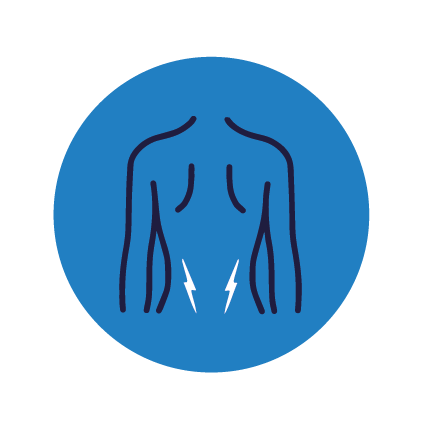Sciatica
Sciatica, or impingement of the sciatic nerve, is characterized by pain originating in the lower back or buttock and often extending down the back of the leg and sometimes into the foot.
The characteristics of the symptoms vary greatly from one person to the next, and can range from a dull ache to sharp, debilitating pain. For some, the pain is marked by a burning sensation. For others, numbness and tingling accompany the pain.
Some of sciatica’s most common symptoms include:



